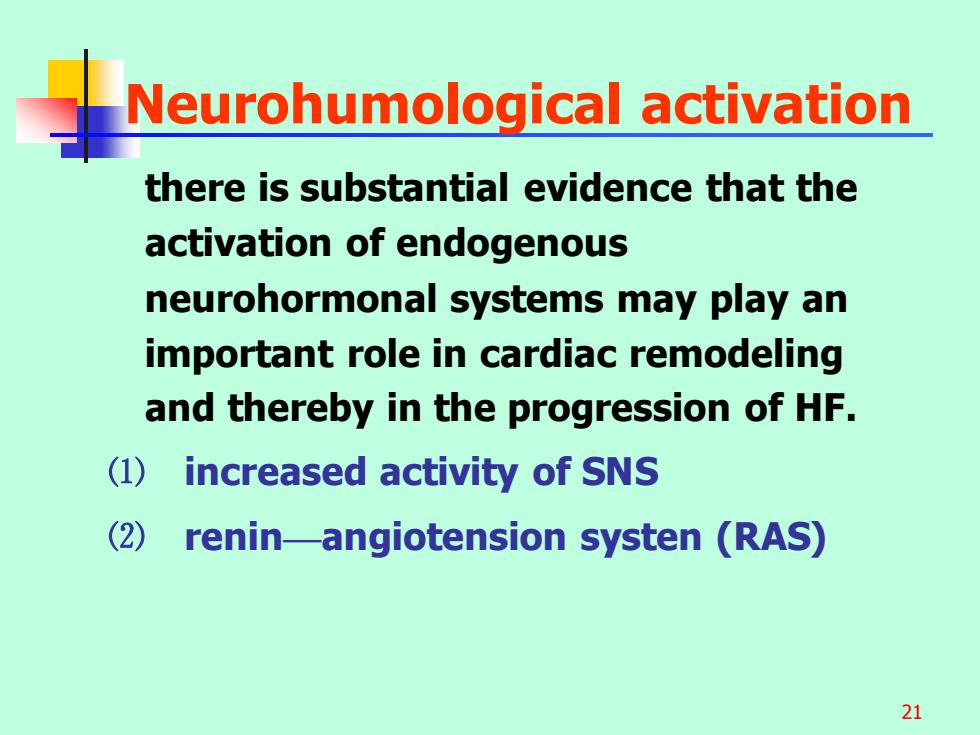
Neurohumological activation there is substantial evidence that the activation of endogenous neurohormonal systems may play an important role in cardiac remodeling and thereby in the progression of HF. (1)increased activity of SNS (2) renin-angiotension systen (RAS) 21
21 Neurohumological activation there is substantial evidence that the activation of endogenous neurohormonal systems may play an important role in cardiac remodeling and thereby in the progression of HF. ⑴ increased activity of SNS ⑵ renin—angiotension systen (RAS)
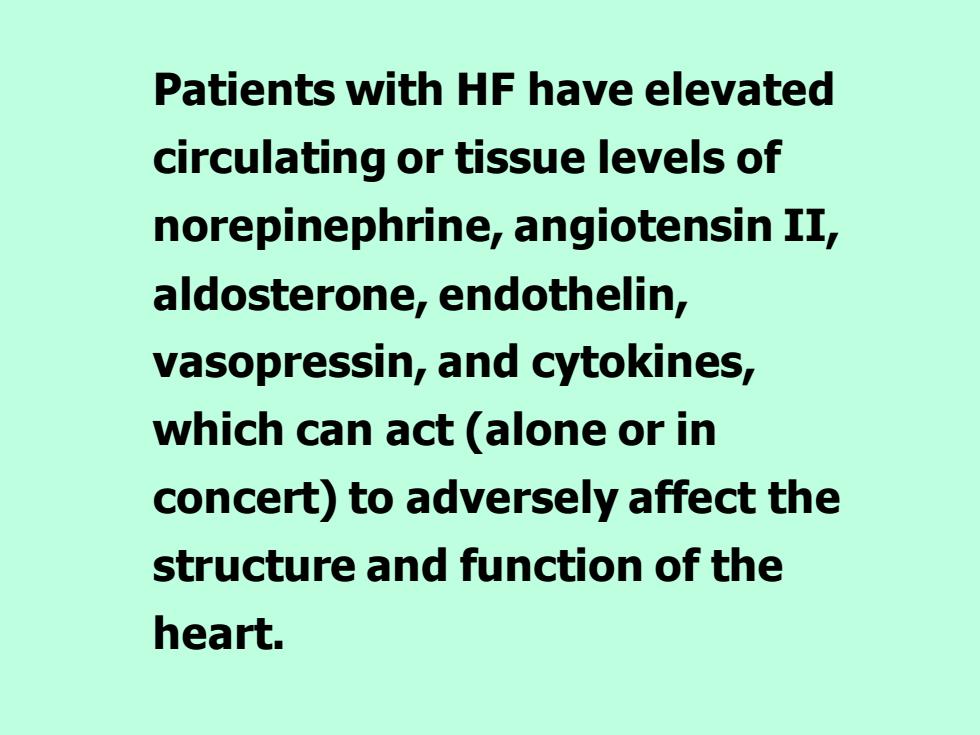
Patients with HF have elevated circulating or tissue levels of norepinephrine,angiotensin II, aldosterone,endothelin, vasopressin,and cytokines, which can act (alone or in concert)to adversely affect the structure and function of the heart
Patients with HF have elevated circulating or tissue levels of norepinephrine, angiotensin II, aldosterone, endothelin, vasopressin, and cytokines, which can act (alone or in concert) to adversely affect the structure and function of the heart
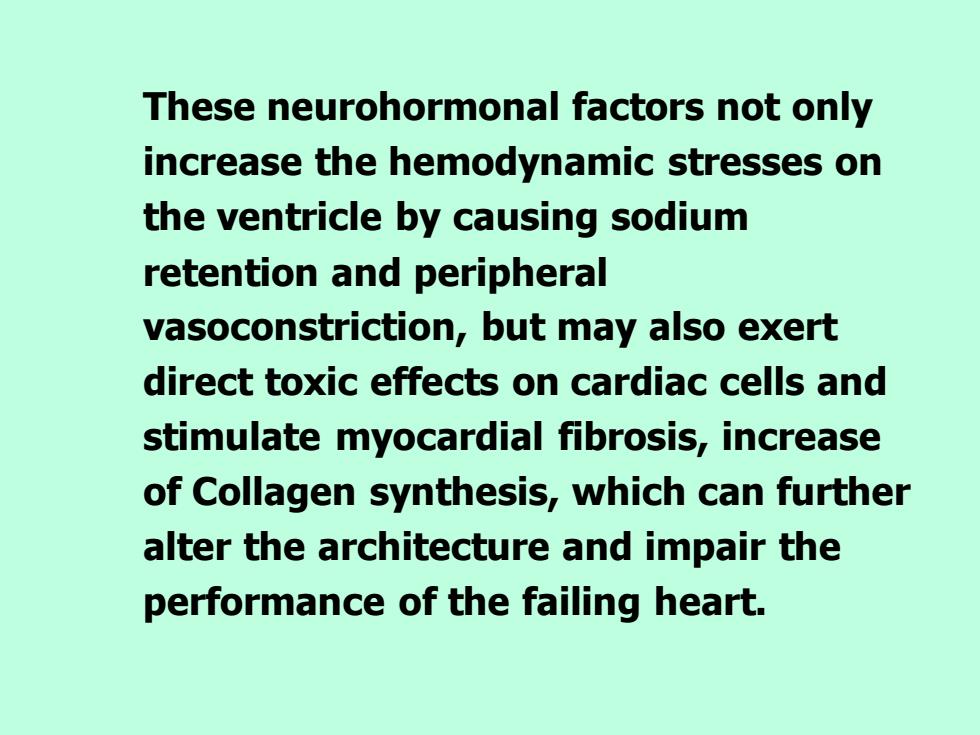
These neurohormonal factors not only increase the hemodynamic stresses on the ventricle by causing sodium retention and peripheral vasoconstriction,but may also exert direct toxic effects on cardiac cells and stimulate myocardial fibrosis,increase of Collagen synthesis,which can further alter the architecture and impair the performance of the failing heart
These neurohormonal factors not only increase the hemodynamic stresses on the ventricle by causing sodium retention and peripheral vasoconstriction, but may also exert direct toxic effects on cardiac cells and stimulate myocardial fibrosis, increase of Collagen synthesis, which can further alter the architecture and impair the performance of the failing heart
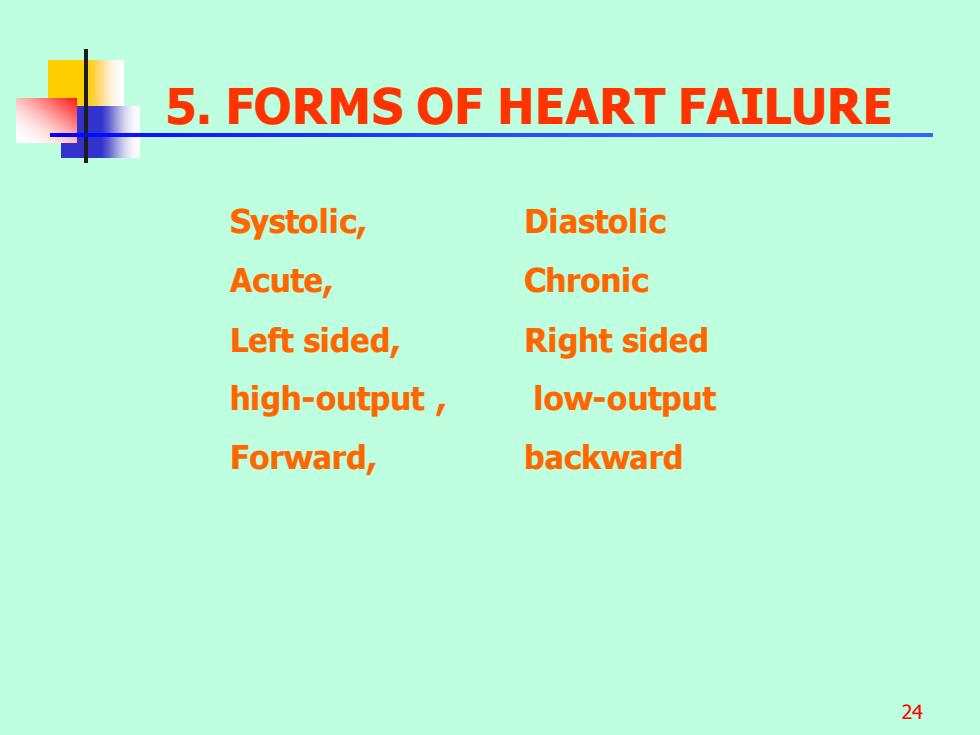
5.FORMS OF HEART FAILURE Systolic, Diastolic Acute, Chronic Left sided, Right sided high-output low-output Forward, backward 24
24 5. FORMS OF HEART FAILURE Systolic, Diastolic Acute, Chronic Left sided, Right sided high-output , low-output Forward, backward
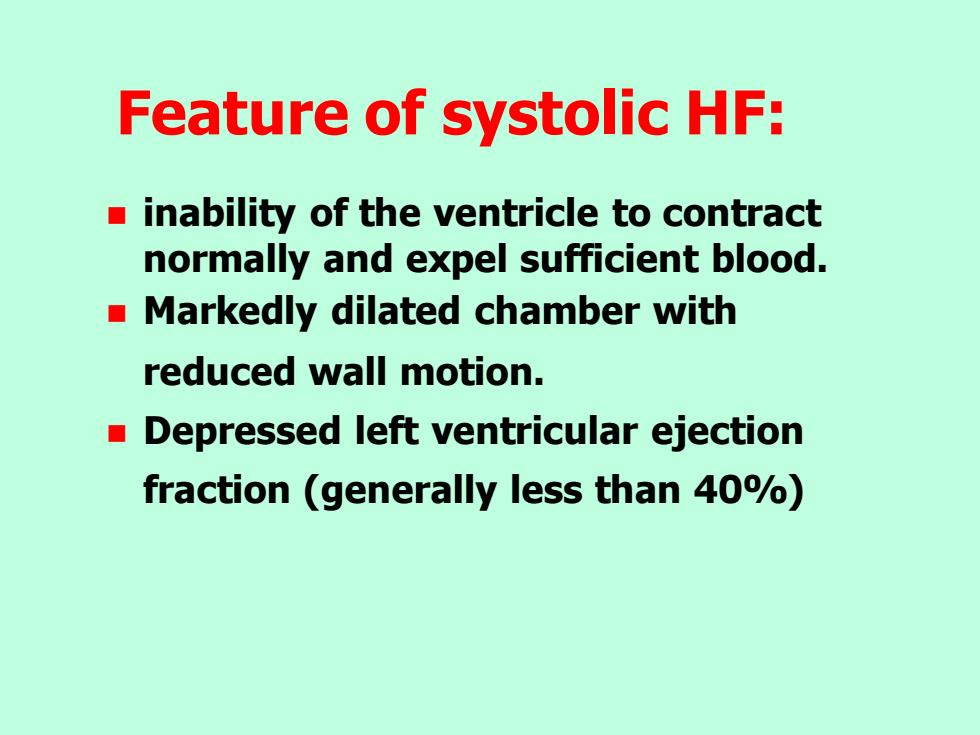
Feature of systolic HF: inability of the ventricle to contract normally and expel sufficient blood. Markedly dilated chamber with reduced wall motion. Depressed left ventricular ejection fraction (generally less than 40%)
Feature of systolic HF: ◼ inability of the ventricle to contract normally and expel sufficient blood. ◼ Markedly dilated chamber with reduced wall motion. ◼ Depressed left ventricular ejection fraction (generally less than 40%)